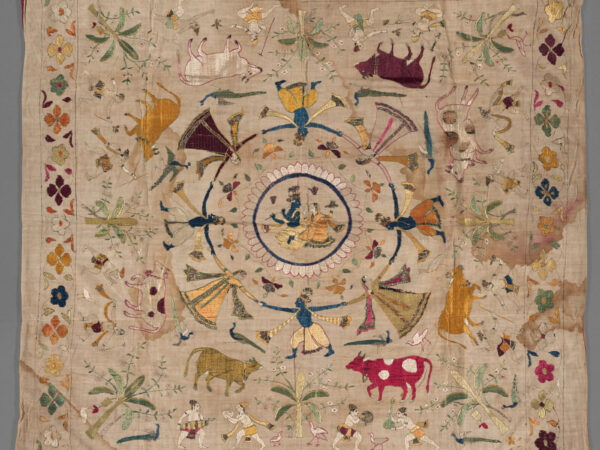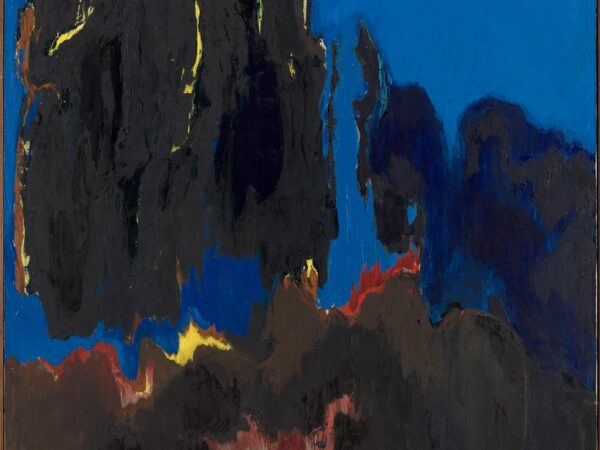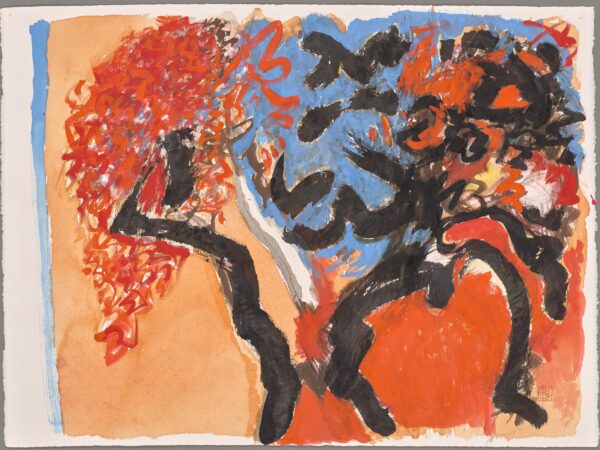Activity
East Asian Art Traditions and Bernice Bing
Objective: Students will be exposed to East Asian art traditions through the lens of a 20th-century Chinese American artist, Bernice Bing.

An example of an enso
Writer Shannon Lee, in her article “The Other Art History: The Gay, Lesbian, and Female Abstract Expressionists (Part II),” states, “Bernice Bing was widely influenced by calligraphy and Zen practices. Much of Bing’s work involved spiritual components connecting to East Asian philosophy and aesthetic practices. She used the exploration of these to support her individual perspective of being an American-born, culturally Chinese artist, who experienced feelings of otherness from both groups.Ultimately Bing created artwork that represented her intersectional identity, and unique devotion to spirituality.”
Content Standards
2.VA:Cn11: Compare and contrast cultural uses of art from different times and places.
Visual Arts 3.0: Understand the historical contributions and cultural dimensions of the visual arts.
4.VA:Re7.2: Interpret art by analyzing use of media to create subject matter, characteristics of form, and mood.
6.VA:Re7.2: Analyze ways that visual components and cultural associations suggested by images influence ideas, emotions, and actions.
5.VA:Re7.2: Identify and analyze cultural associations suggested by visual imagery.
Associated standards
HSS-7.5: Students analyze the geographic, political, economic, religious, and social structures of the civilizations of medieval Japan.
Materials
Projector
Speakers
Computer
Artworks: Bernice Bing Powerpoint (download in from sidebar above)
Asian Art Museum resource: Zen Buddhism
YouTube video: 3 Minute Zen Introduction
Zen Artworks Powerpoint (download in from sidebar above)
Visual Vocabulary of Brushstrokes
Procedure
- Introduce students to Bernice Bing and her background
- Introduce students to Zen Buddhism using the following video resources
- Look over the Zen Artworks (PPT) with your class
- Extension: Have students complete a meditation practice before exploring Zen beliefs further. Try a quick activity of zazen, or Zen sitting meditation. Focus on your belly as you breathe in and out. Sit still and count slowly from 1 to 10. If a thought interrupts your focus on counting, start over. Discuss how difficult it is to just focus for 10 seconds.
- Begin exploring Chinese brush painting using the document Visual Vocabulary of Brushstrokes, located at the Asian Art Museum resource Brushpainting: Nature in Art School Program. Ask students to practice close-looking to notice various techniques, strokes, and shading.
- Look over the Powerpoint ArtWorks: Bernice Bing and discuss the ways ink painting traditions were incorporated into Bing’s work.
- Ask students what ways they could imagine using Zen practices in painting. Extrapolate on how Zen philosophy would support the abstract process of Bing’s work.
Art Extension
Follow instructions in the Asian Art Museum resource: The Spiritual Life of the Samurai: Meditation and Brush Painting
Upper Grade Level Extension
- Research Abstract Expressionism and Asian influence, beginning with this article: https://hyperallergic.com/420734/how-asian-american-artists-made-a-mark-on-abstract-expressionism/
- Have students complete an essay exploring appropriation or appreciation of abstract art. Who received compensation or credit for the abstract movement?




